If you’ve ever been in a recording studio, or you’re a musician who’s had your work recorded, you’ll have come across a “standard” mixer – that’ll be the big thing with sliders on it in the middle of the studio!
Or, if you’ve stood in the middle of a room where there’s a live show going on and glanced over at the cordoned-off mixer being operated by the gig’s sound person, again you’ll have been looking at a similar thing – that mixing desk with lots of faders, knobs and lights is a “standard” mixer.
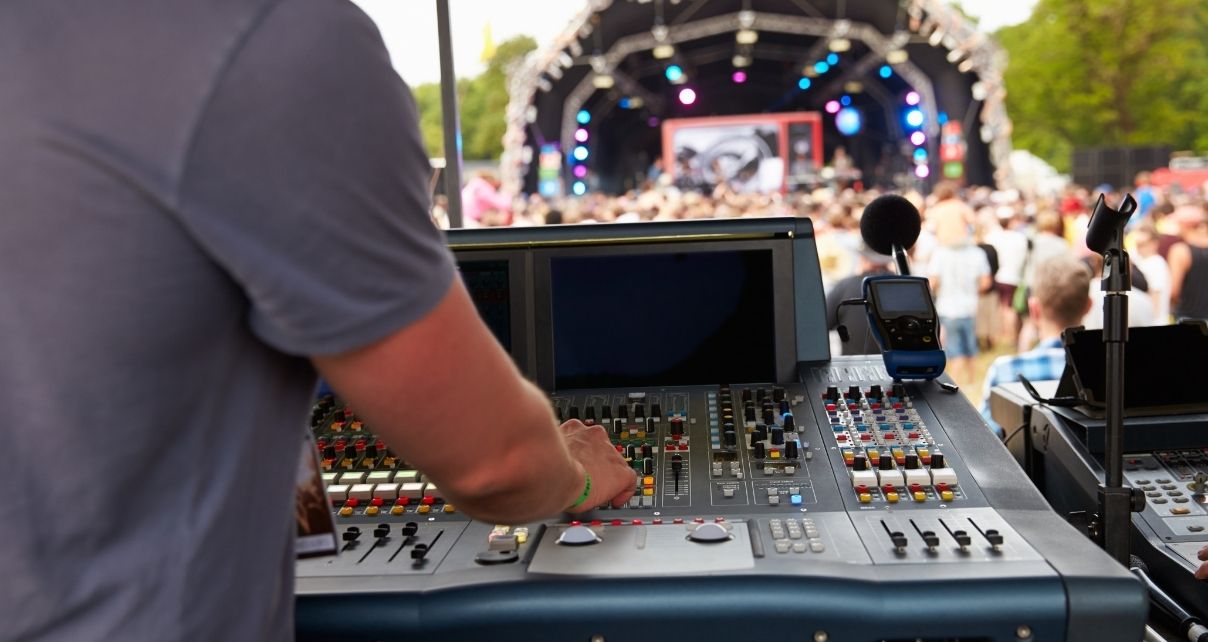
In both cases, the mixer is being used to mix together the sources of the performance into one single output, to go to the speaker and maybe to be recorded, too. (For the latter, all but the most entry-level mixers of all types nowadays have an audio interface built in so they can be plugged into a computer.)
So what’s the difference between this and a DJ mixer? Can you use a “standard” mixer for DJing with, or vice versa?
In this article, I’ll show you what it is that makes a DJ mixer different from a “normal” mixer, so you can better understand how they are both used correctly – and if you’re looking to buy one, so you can make the right choice.
Do you even need a mixer?
As a DJ, if you’re thinking of buying (or you already have) a DJ controller, well, that has a mixer built-in. It could be a “software” mixer (ie it only controls your DJ software), or a “hardware” or “standalone” mixer (it can also control hardware you have plugged in), but in either case, it is doing the job of a mixer for you.
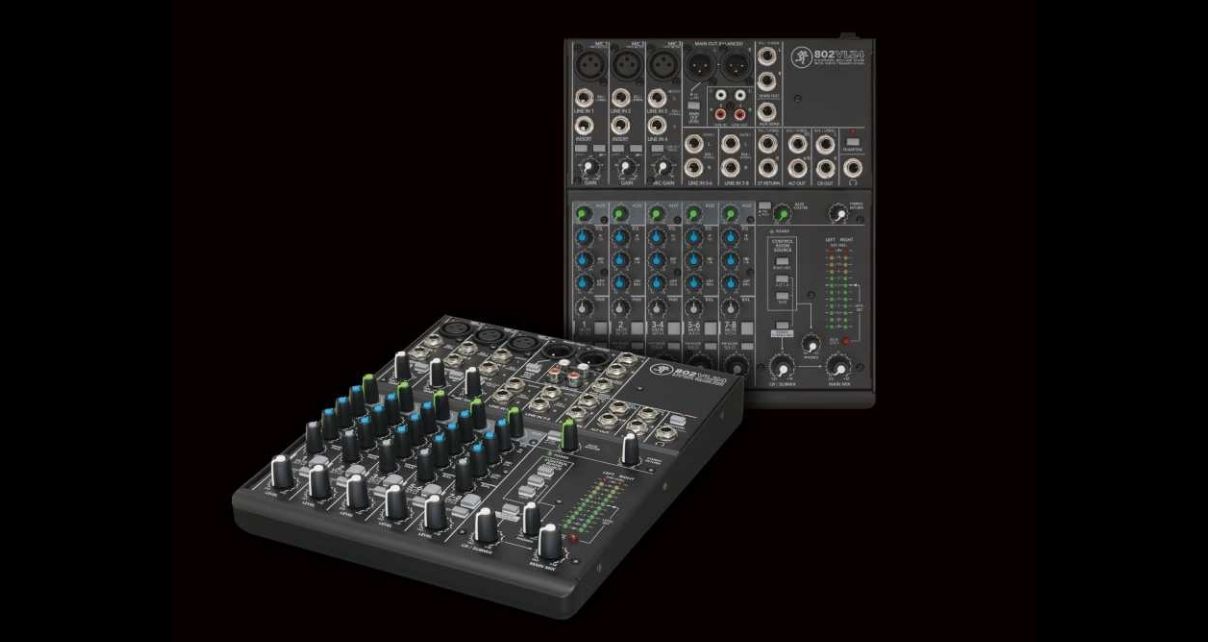
Many DJs, though, still choose to own a tiny live mixer, such as the Mackie 802 VLZ4, to plug their DJ controller into before the signal reaches the PA system, in order to add extra inputs, and have independent control over the gain and EQ of their DJ controller’s output.
This can be especially useful if you play at venues that have a PA system but no mixer of their own, where you are expected to plug directly from your DJ controller into their PA.
Want to know more? Read 7 Reasons Why Every DJ Should Own A Live Mixer
Live mixers
We refer to “non DJ” mixers as “live” mixers, and they’re also sometimes called “band” mixers. These mixers are designed for use with musicians, typically with people playing instruments that are plugged directly into the mixer, or singing/playing into microphones, either in a live situation or in a studio.
Here is a typical small, entry-level live mixer, the Allen & Heath ZED-16FX:
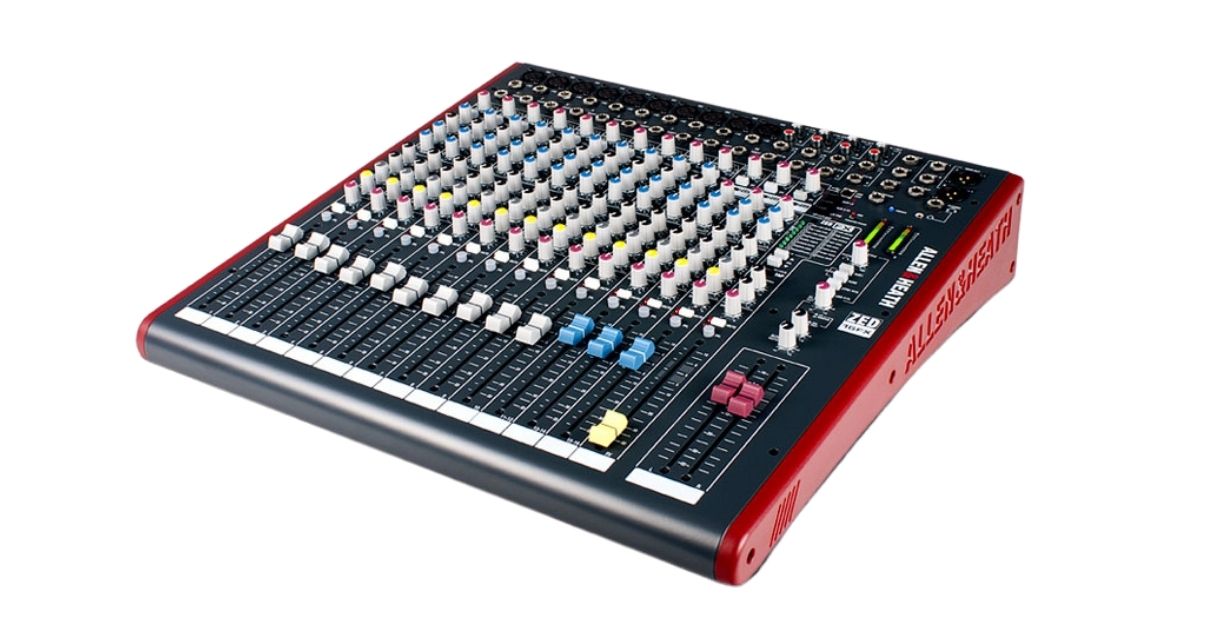
This is what defines this type of mixer (just the basics listed here):
- Their channels tend to be mono – One input, one channel. That’s because microphones, instruments and so on are pretty much always mono
- Their channels are skewed towards microphones – That means their channels are set up to take mic inputs, often offering power to mics plugged in (this is because studios tend to use “condenser” microphones that need power to work)
- Their channels are also skewed towards instruments – Many of their channels will be set up to take inputs from things like guitars and basses, so musicians can plug directly in
- They tend to have way more channels – Live mixers nowadays can easily have 32 input channels, and often more, whereas you won’t find anywhere near that many on most DJ mixers
- They have a lot of controls for each channel – They’ll tend to have more comprehensive EQ, muting and routing controls for each channel, meaning you’ll see far more knobs and buttons above each channel than on a DJ mixer
- They tend to have much longer faders – Their faders are made for small, accurate adjustments, so tend to be longer than those on DJ mixers
- They don’t have a crossfader – Crossfaders make little sense when you have so many channels, and are a performance feature for DJs essentially
- They may have built-in amplifiers – Some mixers are made to work directly with passive speakers, and these so-called “powered” mixers have built-in amplifiers, too – such as the Yamaha EMX5014C powered mixer, but DJ mixers never have this
DJ mixers
DJ mixers, whether designed for club or scratch DJs, are very different from live mixers.
Read this next: Club Mixers vs Battle Mixers – Which Is Right For You?
They are probably best seen as a specialised type of mixer, because due to the very different types of things being mixed and the places these mixers are typically used, they need features not found on live mixers. At the same time, many of the features found on live mixers are unnecessary for DJ mixers.
Here is pretty much the “standard” club DJ mixer, the Pioneer DJ DJM-900NXS2.
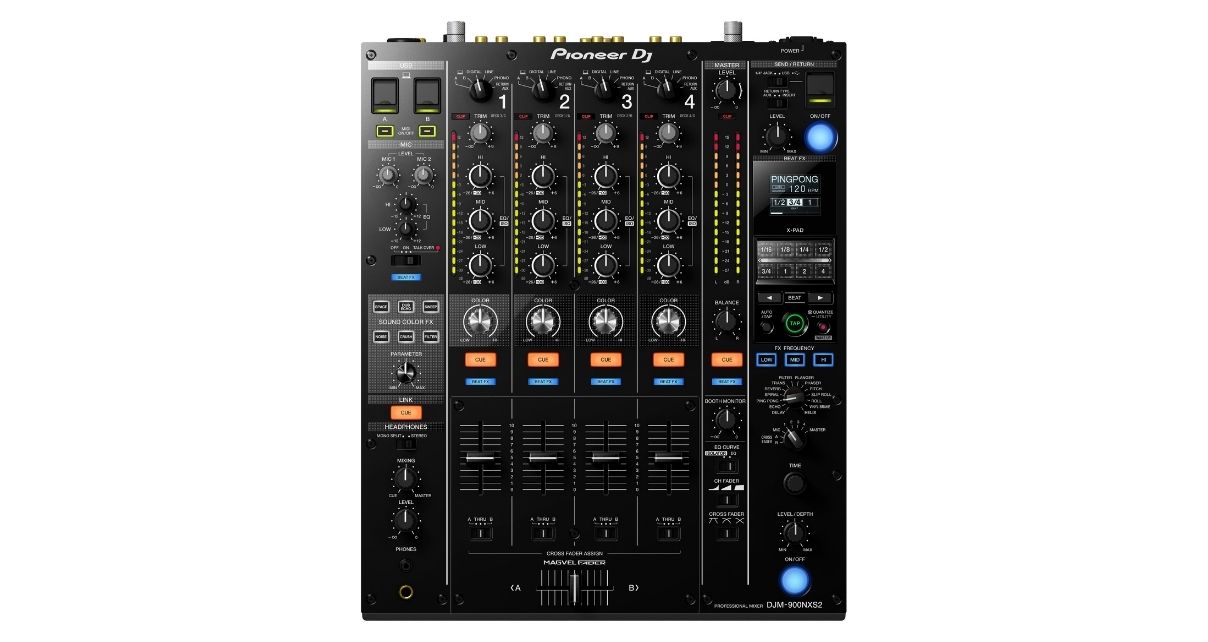
This is what defines this type of mixer (just the basics listed here):
- They tend to have just two or four “main” channels, which are always stereo, not mono – This is because the main “things” being mixed are not instruments or microphones, but stereo-output turntables, CDJs or other recorded music inputs
- They have a headphones cueing section – Of vital importance to DJs is to be able to listen to something other than what the audience is hearing, and so they always have a way of “cueing up” the next track in your headphones
- They have a crossfader – In all but a very small number of examples, DJ mixers have crossfaders, for easy and creative blending to and from between two sources, which is typically how DJs play
- They probably only have one or two limited mic channels – These mic channels will be purely for “dynamic” microphones that don’t need external power, of the type DJs use (check out our DJ’s Guide To Microphones article for more on DJ microphones), and the channels will also have “talkover” to dip the music automatically when the DJ speaks
- Their main channels are very “switchable” – Typically they can accept line-level inputs (CDJs etc), phono level inputs (record decks), and even digital inputs (from a computer)
- They usually have some kind of built-in effects – In the case of the Pioneer model above and many club mixers, they’ll have an effects knob “per channel” and a more comprehensive overall effects engine
- They have limited controls per channel – You may have four or five knobs per channel, with simple EQ, level, and maybe one or two other functions
- There are no instrument channels – No way to plug guitars, basses etc in, as that’s not what these mixers are designed for
So which should you buy?
If you’re a DJ wanting to upgrade your system to separates, you will definitely need a mixer. Hopefully it’s clear by now that the best for you is going to be a DJ mixer, because you won’t be able to live without headphones cueing – period. No need to go further!
Read this next: Best DJ Mixers Buyers Guide
If you’re also a musician or producer who needs a hardware mixer, the best bet is to probably get a live mixer, too, especially if you want to use lots of instruments and microphones, eg with a band.
That said, if you’re a solo producer working mainly in production software without much or any external synths, sequencers or instruments, you could get away with a DJ mixer only, at least at first, and route everything through that – one with lots of inputs will be key, though.
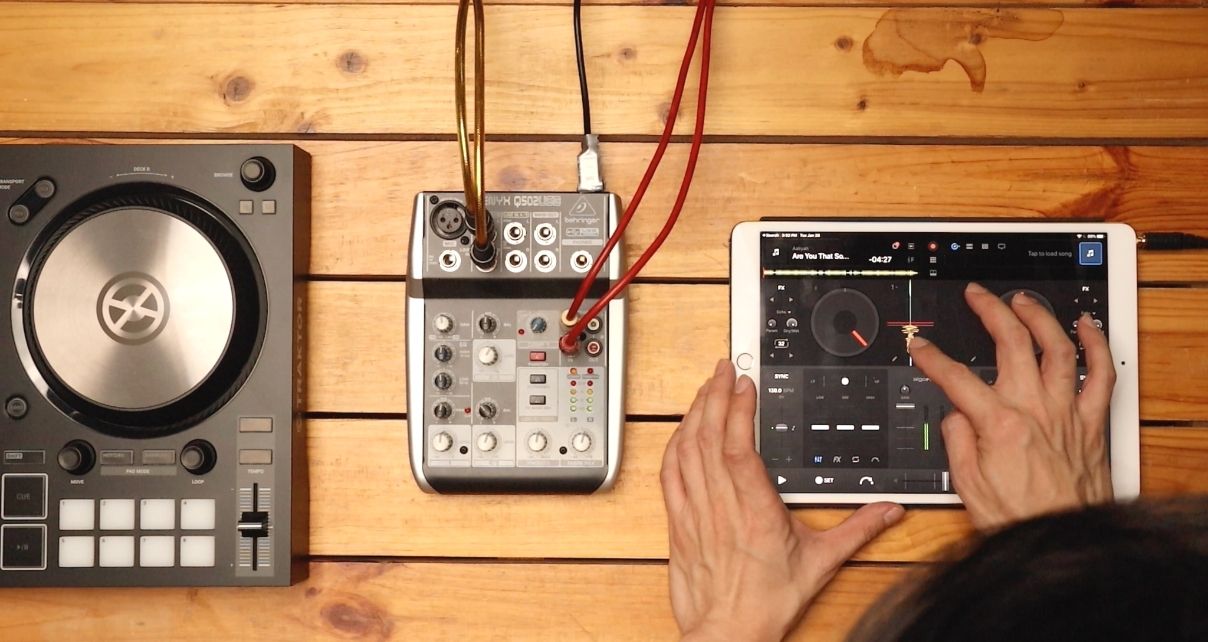
Most DJs who don’t really produce music usually end up with a decent DJ mixer, plus a small live mixer (see the boxout above), which covers them for most bases – for instance, DJing, but being able to sometimes add in another DJ, an instrumentalist or two, and properly EQ everything before sending the final stereo output to the PA.
Learn to DJ using ANY gear: The Complete DJ Course
Ultimately, they’re both very different, for different use cases, but if you can only buy one to start, it has to be a DJ mixer.




